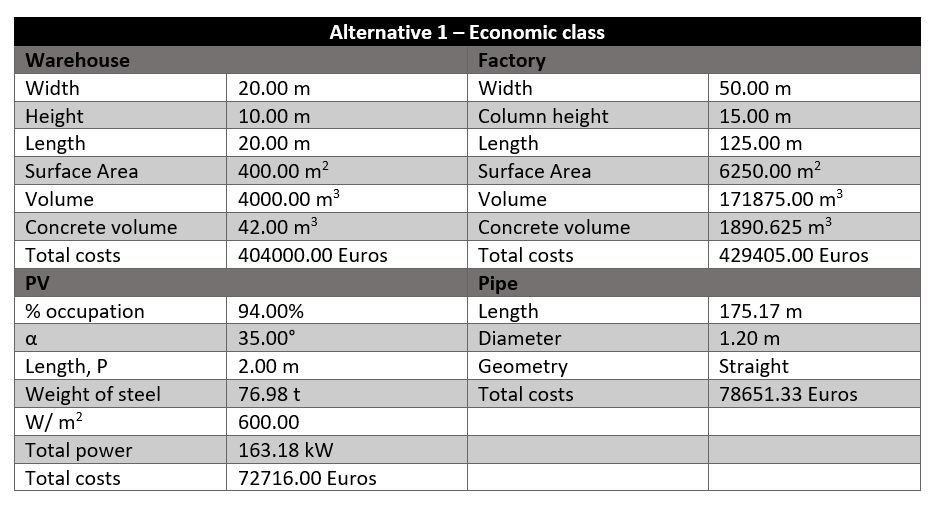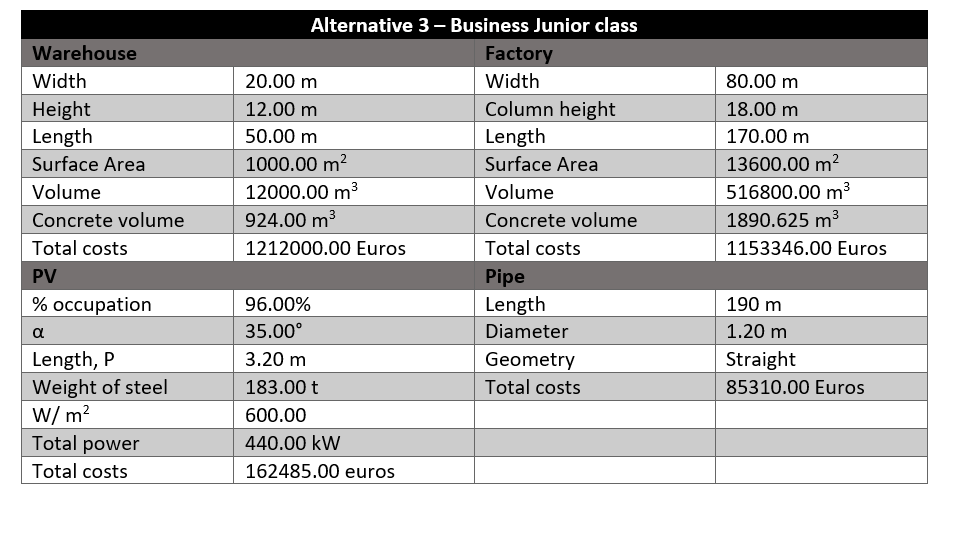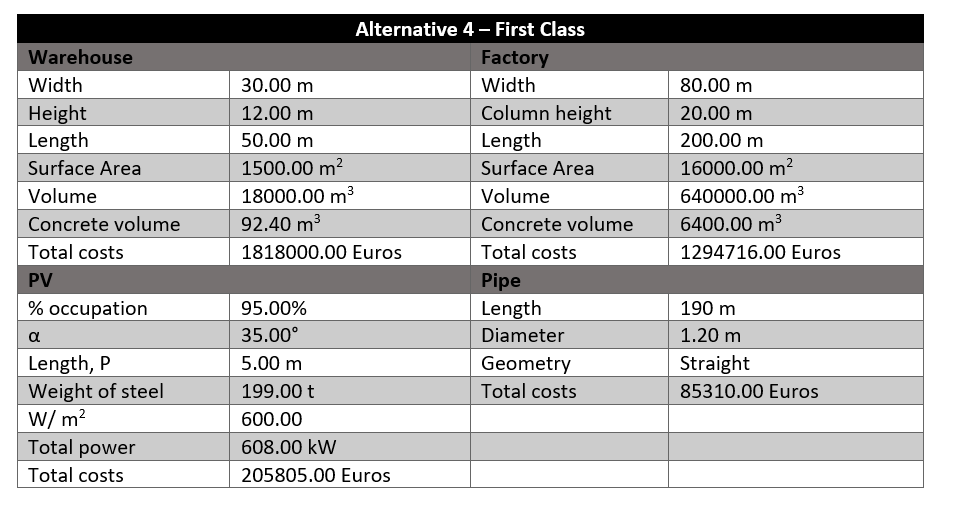In order to evaluate the model, it was decided to vary the input parameters so as to and observe how the HPCs of the different models interfere with one another and identify where and how to sort out compromises. In this section we will move through our design options in order to understand their differences at the input.
It was decided to evaluate 4 different alternatives as described below.
Alternative 1 – Economic class

Here the model was parametrised to the lowest input values, the width, height and lengths of the buildings are all set at a minimum. It is a suitable configuration for the following investment categories:
- Investment with low initial capital
- Investments with short term goods conservations (relatively small warehouse volume)
- investments where construction costs need to be low to favour the budget for machinery, transport means and so on.
Moreover, with this configuration , it is possible to have a base point and observe the progressions brought by the other alternatives.
The table below sumarizes the input parameters of the alternative.

Alternative 2 – Business class

This comes close to the full capacities but isn’t there yet. In this situation the inputs are at 80% of the maximum possible. It is suitable for the following situations
- Projects requiring large space
- Investments in which the products may be stored on mid-term
- Investments requiring machinery with a high height
In such a way it could be useful for the designer to know, if at some point the effectiveness faces a decrease or a change of slope. The table below summarizes the inputs for this class

Alternative 3 – Business Junior class

This alternative is similar to the Business class but has seen some modifications in order to reach an overall lower cost for the package. In terms of overall surface area we are close to the previous class, but as it will be noticed on the table below, the amount of energy saved will be less. The values for this option were chosen following the logic of optimised genetic algorithms, so as to evaluate the possibility of a higher effectiveness following another slope.

Alternative 4 – First class

This is the highest in terms of space occupation and financial investment available in our scheme. These are for investments with:
- Large spaces requirements
- High initial capital
This package could be interesting because it will allow to investigate the relationship between the investment costs and our KPIs and HPCs. The table below shows the values corresponding to this option.

NB: The comparison between these alternatives are discussed in section 4